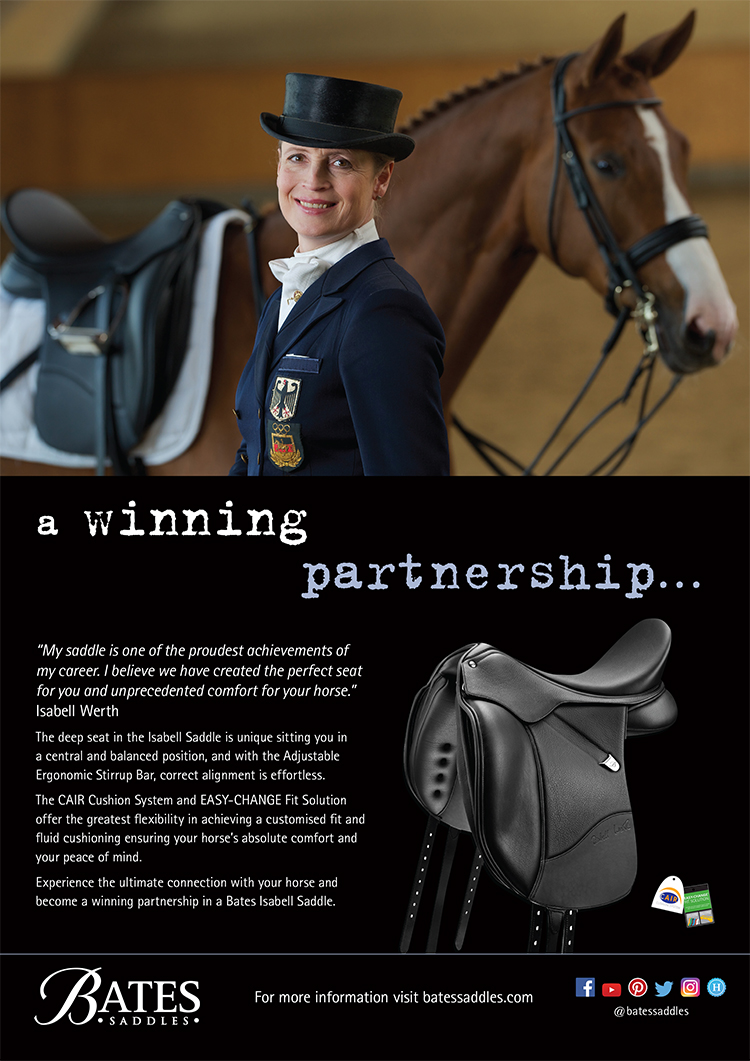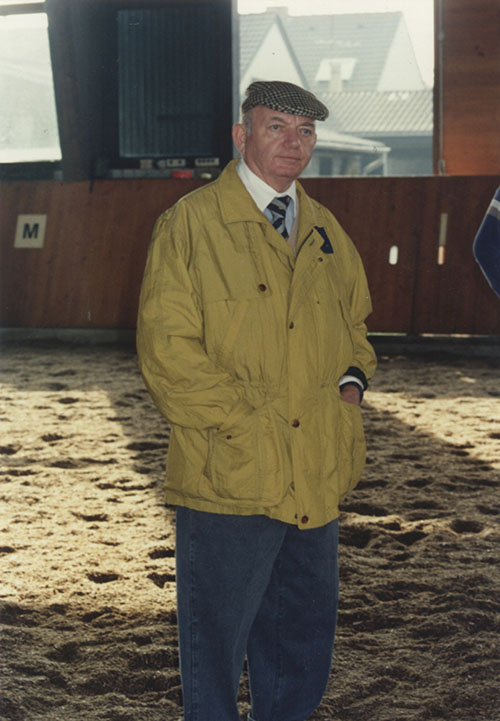
Dr Uwe Schulten-Baumer Senior is one of the most successful dressage trainers in the world. He has trained very few pupils and prefers ‘quality’ work to the mass activity of other instructors and trainers. He can afford to do this, because he does not have to make a living from his equestrian activities. He is a graduate in Engineering (hence the doctorate).
Dr Schulten-Baumer trained his son, Dr Uwe Schulten-Baumer Junior, to the top in international competition back in the late 70’s and early 80’s, riding Schlibowitz and Madras. Madras was also ridden successfully at international level by his daughter Alexa (and then went on to give Isabell Werth her first taste of the big time!)
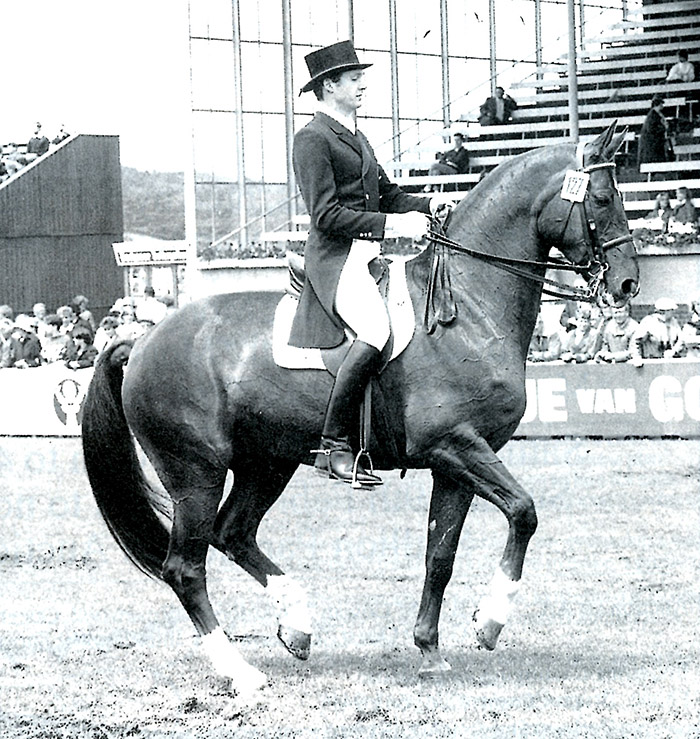
Uwe Schulten-Baumer Junior and Madras
Dr Schulten-Baumer trained Pia Laus to victory for Germany at the European Young Riders, and then, after she adopted her mother’s Italian citizenship, into tenth place at the World Championships in Stockholm in 1990.
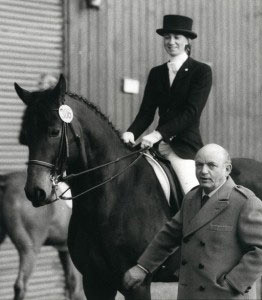
He was the trainer who brought Nicole Uphoff and Rembrandt to top international competition, but unfortunately they parted after a personality clash, just a few weeks before the 1988 Olympic Games. The result of his work was obvious, Nicole won the Gold medal in grand style, and just after the Olympics Dr Schulten-Baumer told the international press: “I have another star coming, a lot more talented than Nicole, she is Isabell Werth.”
Isabell just 18 then, rode his pretty difficult, but talented, Hanoverian, Weingart, in the gold medal winning German Team at the 1989 European Championships. In March 1991, at the big CDIO in Dortmund, Isabell won the Grand Prix Special with the seven year old Hanoverian, Gigolo, beating Sven Rothenberger on Ideaal and Nicole Uphoff on Rembrandt.
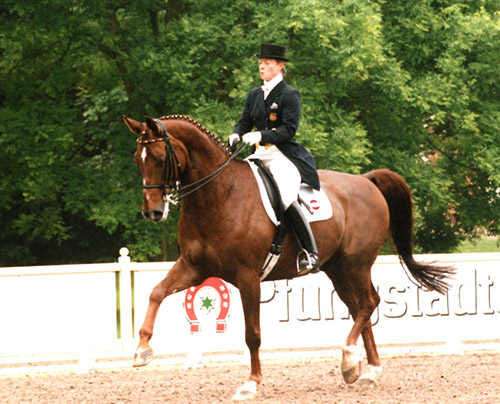
Promising youngster – Gigolo
In this interview, Dr Schulten-Baumer outlines his philosophy to Christian Thiess. “I am a riding trainer as a hobby in the free time which my job as a director in the steel industry allows me. I have been involved in equestrian activity since my youth, and just after the War took part in the Grand Prix of Show jumping at Aachen. Since then I have become more and more interested in Dressage, and I translated this interest to my son, who won the Young Rider Dressage Championships. He was a member of the German team at the European Championships, several times with Schlibowitz, Madras and Feudal – horses which we have prepared. On Schlibowitz he was the silver medallist at the World Championships in Goodwood in 1978, in a very controversial judging decision, behind Christine Stückelberger riding Granat. My daughter Alexa was second in the Grand Prix at Rotterdam, with Madras.”
Do you ride your pupil’s horses?
“No. Actually I never sit on the horses of my pupils. I ride if necessary, but not as a training method. I must say that Isabell and my children are all exceptionally talented riders. They have prepared the horses by themselves under my supervision and my advice. My daughter Alexa is now married and a mother. She has shifted away, training by herself and is preparing four horses.”
In the magazine Reiter Revue International it was suggested that a woman cannot prepare a top dressage horse without the help of a man to help ride the horse. Do you agree?
“We have proved this statement incorrect. I don’t think it is true. Of course, it depends on the quality and talent of horse and of rider.”
Were you professionally trained as a trainer?
“No, I got my knowledge through experience and passion for riding. I think my strength is that I don’t have a set program in the preparation of my horses. I am very flexible and each time I am working accordingly to the particularities of each horse. I think that the most important thing is to ride the horse deep – long and low. The deep riding must be understood and be done correctly. Riders must pay attention to the fact that the hindquarters must be activated. It is not enough if the head of the horse is low. The neck and back muscles must swing, which will develop these muscles into a sort of stallion neck.”
You have taught in England, did you find it difficult since you don’t speak English?
“I do not speak fluent English, but I could transmit the necessary professional terms in an understandable way.”
What do you do in a practical lesson?
“The horse will first be ridden on the circle into the outside rein. The horse’s inside leg will cross over in front of the outside one. The same happens at the trot. The trot has to be relaxed and loose and must show from the hindquarters a light swinging movement. Then little by little, depending on the relaxing degree, the horse will be pushed together. I also do shoulder-in, half parade, until the horse gives at the poll, and engages the hind legs.”
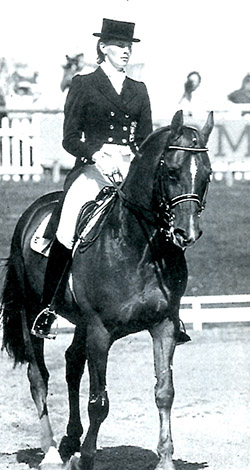
Pia Laus and Adrett competing at Goodwood 1991
Currently you are only training two pupils – Isabell Werth and Pia Laus – why?
“I consider that concentrating 100% on one or two pupils, one can really achieve something special.”
What do you think of top riders who have no trainers, like Klaus Balkenhol?
“I think Klaus Balkenhol is, of course, a very talented rider, but I don’t think he is doing everything alone. He has first his wife who has a very critical eye on him, and second he is coming from time to time to the national trainer, Harry Boldt, who has an eye on him. Any rider, however talented and experienced they may be, needs someone to tell them how correct their riding is.”
What is the future for Isabell Werth?
“With Gigolo just eight years old, we hope to have a great horse of the future with unlimited possibilities. Gigolo was bought by my son. I took the horse over later because my son has very limited time and no time for competition – he is now working as chief doctor in a clinic.”
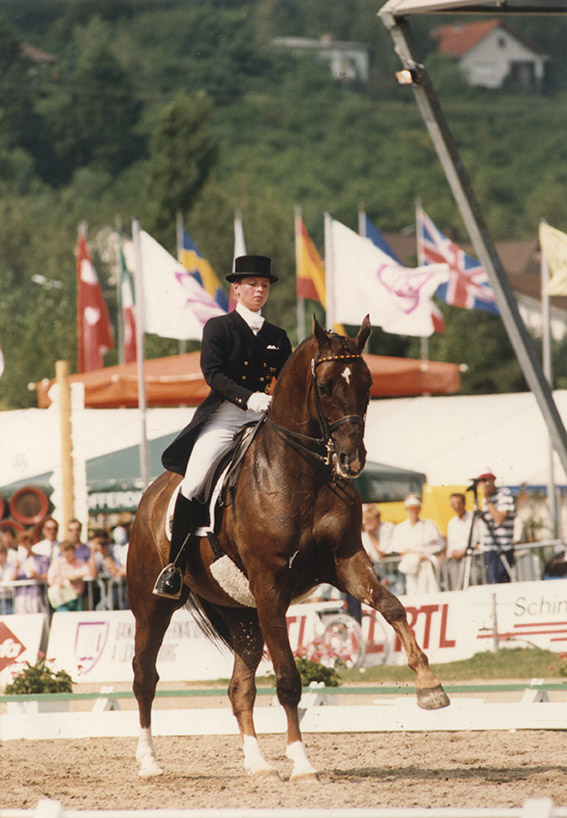
Isabell and Madras
How do you consider yourself as a trainer – a soft or energetic one?
“The older generation bases a lot of the training on the military training methods. I think that you have to deal with the psychological problem. You must see that you keep your rider in the direction of his capabilities. You must sometimes push a little harder, but you in the end must be able to reward the rider. I see myself as a quite patient trainer. I think it is a very important point to keep quiet so that the rider doesn’t switch off, but you activate them in the right direction.”
Do you keep your horses in work for the whole year?
“The horses are worked through the year. The advanced horses, who are established in the required movements, are only worked through relaxation. That means longer walk parts, nice round trotting, and also swinging canter. This exercise keeps the horse supple and preserves the ability to move with impulsion. Before the competition season starts, we slowly build the horses up, little by little.”
During the training sessions, do you give the horse breaks and rest periods?
“No. If you do that, they fall apart. They become too long and it is difficult to push the horse together again. Relaxation takes place only at the beginning, during the loosening phase, and again at the end of the session.”
What advice do you have for riders?
“Beginning with the horse material, it is important that the paces fulfill the requirements. A very important point is that the horse’s temperament must be well balanced, and that he doesn’t have any temperament problems. In my work I always consider it an important fact that you have to adjust your demands to the individual and psychological aspects of the horse, and that you never overload the horse’s capabilities. It is important also to get the movement you want, and are able to come to a point where you can reward and praise the horse, so that it knows that it has done right. Nothing is worse than to overburden the horse that hasn’t got any idea of what it should be doing.”
This article originally appeared in the January 1992 edition of The Horse Magazine
